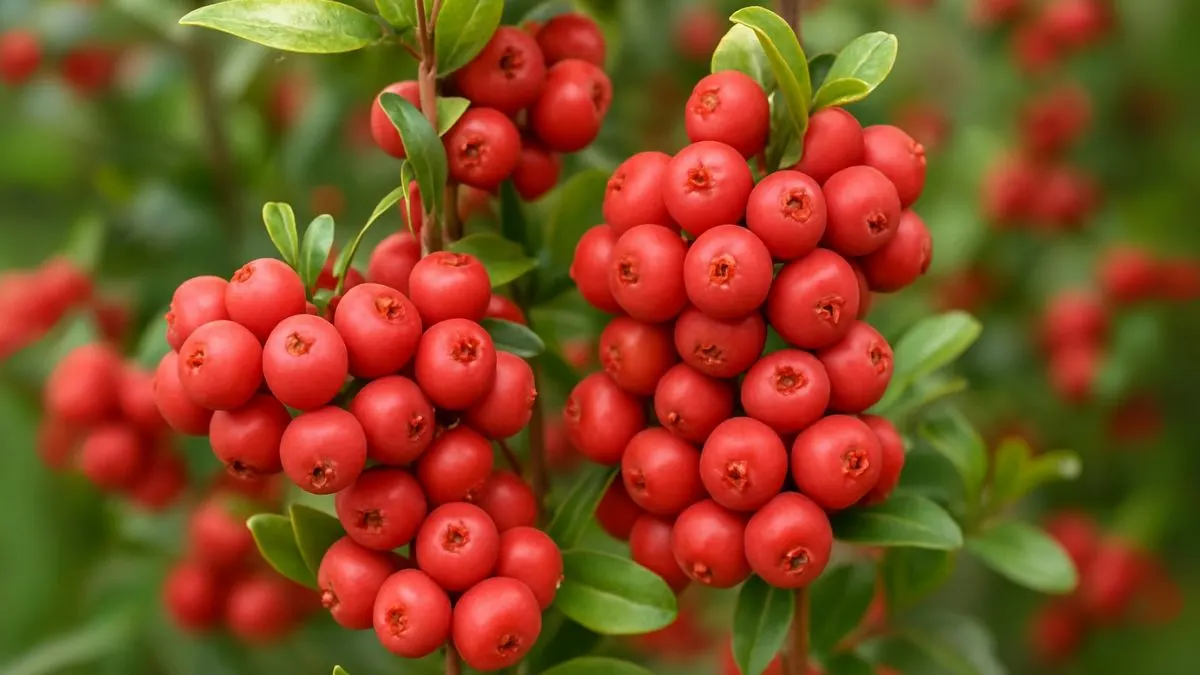If you’ve ever wanted to taste a fruit that carries both cultural significance and nutritional power, meet the riberry fruit. Native to Australia and fondly known as Australia’s national fruit!, this bright pink to deep red berry has been a part of Indigenous diets for thousands of years.
From its stunning pear-shaped fruit, 12–15 millimetres in length, to its refreshing tart flavor with a hint of clove, the riberry is more than just a pretty addition to the table—it’s a superfood making waves in global kitchens.
What is Riberry?

Riberry comes from the Australian lilly pilly syzygium luehmannii tree, which can be found in coastal rainforests of eastern Australia. Its clusters of vibrant pink fruits of Australian lilly pilly syzygium luehmannii or riberry are harvested between December and February, marking the peak of summer.
The fruit is typically described as:
- A small, red berry, about 1 cm in diameter
- Or a pear-shaped fruit, 12–15 millimetres in length
This makes it visually distinct and perfect for garnishing desserts, drinks, and savory dishes.
Riberry Taste
The riberry fruit has a tangy, tart taste, often compared to cranberries, with subtle notes of spice and clove. This unique flavor profile makes it highly adaptable—it can be made into jams, sauces, syrups, chutneys, and even infused into gin or cocktails.
Personally, the first time I tried riberry jam on warm sourdough bread, it instantly reminded me of Christmas cranberries with a twist—sweet yet slightly spicy.
Also Read: Japan’s Green Rooftop Car Parks: Turning Parking Lots into Floating Gardens
Nutritional Benefits of Riberry
Riberry isn’t just about taste—it’s packed with nutrients that make it a true superfood.
Key Benefits
- Rich in vitamin C, helping boost immunity.
- High in antioxidants, protecting the body from oxidative stress.
- Contains folate and calcium for healthy bones and cell function.
- Anti-inflammatory compounds that may aid digestion.
No wonder it’s becoming increasingly popular in wellness circles worldwide.
Cultural and Historical Significance
For Aboriginal Australians, riberry has always been more than food. It was used for both nourishment and medicinal purposes. Its juice was believed to help soothe sore throats and coughs, while the fruit itself provided essential vitamins during the hot summer months.
Today, riberry remains a symbol of the deep connection between nature and traditional knowledge.
Growing the Riberry Tree
The riberry tree is evergreen and can grow up to 30 meters in rainforests, though smaller cultivated varieties are ideal for home gardens. It thrives in warm climates but can also adapt to cooler regions if protected from frost.
- Plant in rich, well-draining soil.
- Choose a sunny to partly shaded location.
- Water regularly during the growing season.
- Trees begin fruiting within a few years, rewarding you with clusters of brilliant pink-red berries.
Also Read: Transform Shady Borders with These Stunning Plants
Uses of Riberry
The riberry fruit is incredibly versatile:
- Culinary delights: Perfect for jams, chutneys, jellies, pies, and sauces.
- Beverages: Added to cordials, cocktails, and teas.
- Medicinal uses: Traditionally used to relieve ailments like sore throats.
- Modern gastronomy: Used by chefs in fine dining restaurants across Australia, Canada, and even the USA to create unique flavor combinations.
Where is Riberry Found?
Riberry is found mainly in coastal rainforests of New South Wales and Queensland in Australia. However, its popularity has led to cultivation in other regions. Specialty stores and online retailers now ship riberry-based products internationally.
If you’re in North America, you might not find fresh berries easily, but you can buy riberry jam, syrups, and sauces online.
Quick Facts About Riberry
Feature |
Description |
Scientific Name |
Syzygium luehmannii |
Common Name |
Riberry, Small-leaved lilly pilly |
Size |
A small, red berry, about 1 cm in diameter OR pear-shaped, 12–15 mm |
Color |
Bright pink to dark red |
Native Range |
Eastern Australian coastal rainforests |
Cultural Value |
Consumed by Indigenous Australians for food and medicine |
The riberry fruit is more than just a pretty berry—it’s a symbol of Australia’s rich biodiversity and cultural heritage. From its distinctive tart flavor to its role as Australia’s national fruit!, riberry deserves recognition globally.
Also Read: How to Craft Your Own Garden Hedgehog
Whether you enjoy the pink fruits of Australian lilly pilly syzygium luehmannii or riberry in jams, drinks, or fresh from the tree, you’re not only indulging in taste but also in a history that stretches back thousands of years.
If you’re in Canada, the USA, or beyond, keep an eye out for this rare superfruit—it’s only a matter of time before riberry becomes a household name worldwide.
🌿 Ready to try something exotic? Add riberry to your food adventures and discover why this tiny pear-shaped fruit, 12–15 millimetres in length, is making such a bold statement.






